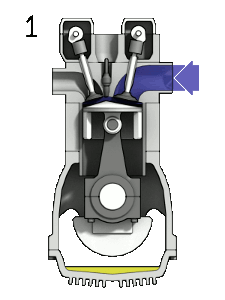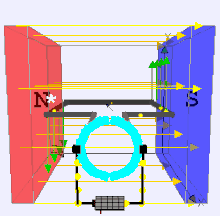You may have heard a lot about two and four stroke engines. Last article, we have learned about
the advantages and disadvantages of two-stroke engine. There are strong opinions in pro and con of each of the engine types. So, in this post, we will talk about the 4 stroke engine.
Just keep reading…
Four stroke engine is also called four cycle engine. It uses the piston completes four separate strokes—intake, compression, power, and exhaust. Two-stroke engines are light weight and groovy power band, but the fact is that 4-stroke engines are preferred for almost every road-going vehicle on the planet.

Advantages
More torque
This is the most important reasons why people choose a 4-stroke engine. The two-stroke boasts its speed and power, but the four-stroke shows extra torque. It is more reliable and quitter.
Last longer
Four stroke engines last longer and use much, much less oil. Compared to two-stroke engines, the four stroke engine is durable for use. The more times an engine goes around, the quicker it will wear out. As 2-strokes must rev to very high RPM to make any power, most applications using them are geared toward maintaining that RPM. Thus, they can’t live as long as four-stroke engine.
Run much cleaner than 2 strokes
A 2 stroke makes a lot of exhaust smoke because it burns oil mixed with fuel. On the contrary, four-stroke engines have a dedicated oiling system that’s kept largely separate from the combustion chamber, which help to ensure that the only thing burning in the engine is gasoline.
More efficient use of gas
If you have picked up both of them, you may obviously realize the problem. The intake and exhaust accounted 360 °crank angle, the exhaust top dead center the piston upward, the residual gas is exhaust forcibly. When a mixture of fuel and air is forced by atmospheric pressure into the cylinder, the piston down to the intake bottom dead center, the incoming fresh mixture almost combust. Substantially, there is no wasted fresh mixture. However, for two-stroke engine, the fresh mixture is escaping with exhaust gases during exhaust stroke.
Disadvantages
Complicated
Two-stroke engines do not have valves, simplifying their construction. However, there are more parts to worry about in a four-stroke engine which results in harder to troubleshoot.
Half as powerful as two stroke engines
For equivalent engines, the four stroke ones fire once every two revolutions, while two stroke engines are more powerful because every revolution of the engine includes a power stroke.
More expensive than 2 stroke
A four-stroke engine is much more expensive and complex than a two-stroke one. It has more complied with more parts so they often require repairs more often and it is usually more expensive.




 brushed DC electric motor
brushed DC electric motor



